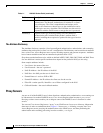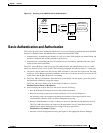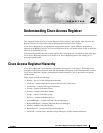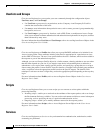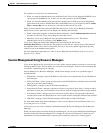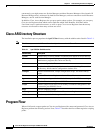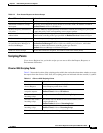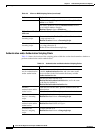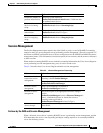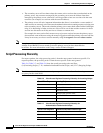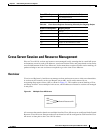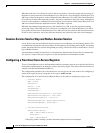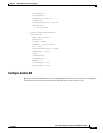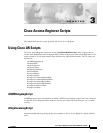
2-6
Cisco Access Registrar 3.5 Concepts and Reference Guide
OL-2683-02
Chapter 2 Understanding Cisco Access Registrar
Program Flow
Authentication and/or Authorization Scripting Points
Table 2-4 shows the location of the scripting points within the section that determines whether to
perform authentication and/or authorization.
Table 2-4 Authentication and Authorization Scripting Points
/Radius/Advanced/RequireNASsBehindProxyBeInClie
ntList set to TRUE.
The NAS’s Identifier listed in /Radius/Clients/<Name>,
or its NAS-IP-Address listed in
/Radius/Clients/<Name>/IPAddress.
If the client’s IP address listed in /Radius/Clients/<Name>/IPAddress is
different:
*Executes the vendor’s
incoming script.
The vendor listed in /Radius/Clients/Name/Vendor, and is
a script referred to in
/Radius/Vendors/<Name>/IncomingScript.
*Executes the client’s
incoming script.
The client listed in the previous /Radius/Clients/Name, and
is a script referred to in
/Radius/Clients/Name/IncomingScript.
Table 2-3 Client or NAS Scripting Points (continued)
Action Explanation
Action Explanation
Determines Service to
use for authentication
and/or authorization.
The Service name defined in the Environment dictionary
variable Authentication-Service, and is the same as the
Service defined in the Environment dictionary variable
Authorization-Service.
The Service name referred to by
/Radius/DefaultAuthenticationService, and is the same
as the Service defined in
/Radius/DefaultAuthorizationService.
Performs
authentication and/or
authorization.
If the Services are the same, perform authentication and
authorization.
If the Services are different, just perform authentication.
*Executes the
Service’s incoming
script.
A script referred to in
/Radius/Services/<Name>/IncomingScript.
Performs
authentication and/or
authorization.
Based on the Service type defined in
/Radius/Services/<Name>/<Type>.
*Executes the
Service’s outgoing
script.
A script referred to in
/Radius/Services/<Name>/OutgoingScript.



